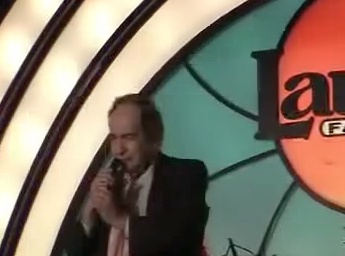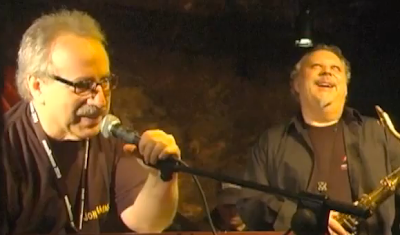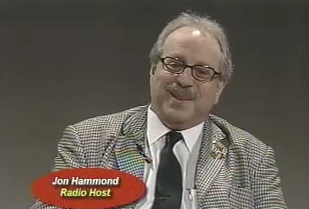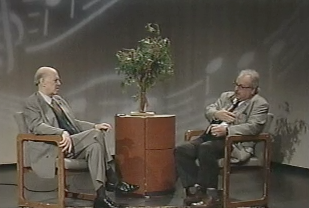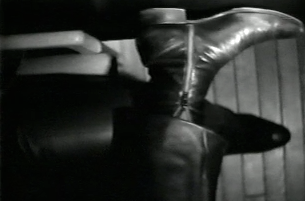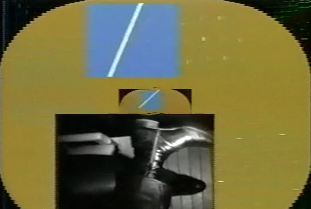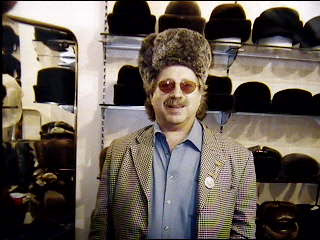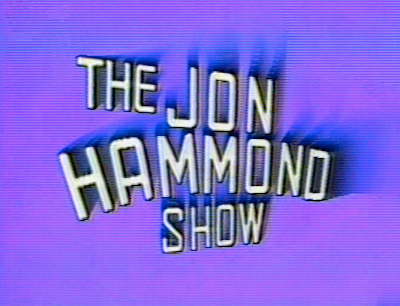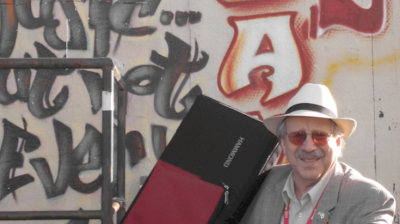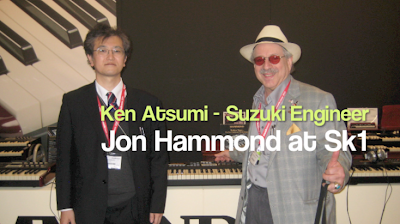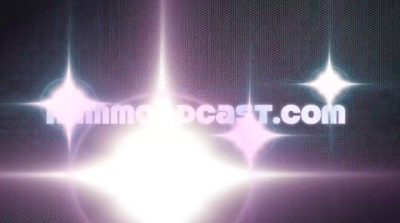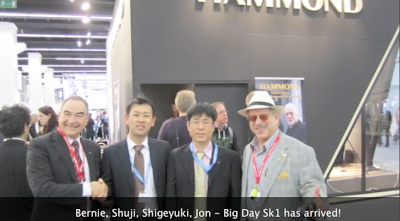Czechoslovakian Salsa Song Louisville Soundcheck & Jon Hammond Journal 07/30/2012
http://archive.org/details/JonHammondCzechoslovakianSalsaSongLouisvilleSoundcheck/
Youtube http://www.youtube.com/watch?v=qONB1DmAVBc
Jon Hammond Band soundchecking in Louisville Kentucky, original composition "Czechoslovakian Salsa Song" with Alex Budman tenor sax, Ronnie Smith Jr. drums, John Bishop guitar, Jon Hammond organ
http://www.jonhammondband.com
Category:
Music
Tags:
czechoslovakian, salsa song, jon hammond band, organ jazz, louisville kentucky
Blip TV http://blip.tv/jon-hammond/czechoslovakian-salsa-song-louisville-soundcheck-6280468
Vimeo http://vimeo.com/46595437
Czechoslovakian Salsa Song Louisville Soundcheck from Jon Hammond on Vimeo.
Pictures from Evening Health Walkhttp://www.facebook.com/media/set/?set=a.10150992523257102.403672.558692101
Kunio Miyauchi Why did this photo shoot Jon? It is a picture that a healing!
Jon Hammond Good morning Kunio! This is one of our favorite places to walk. Like my friend Narada Michael Walden says, walk to stay alive! Have a wonderful day & week, very best wishes from California, Jon
San Francisco California -- Jon Hammond Band Lunchtime Gig in front of San Francisco City Hall - shown James Preston drums Jon Hammond at 1965 B3 Hammond organ
Youtube http://www.youtube.com/watch?v=V98fwDJSHWw
2,062
Presented by City Hall San Francisco & Local 6: JON HAMMOND Band on front lawn of the beautiful SF City Hall during lunch hour free concert. JON HAMMOND at the B3 Organ along with Harvey Wainapel tenor, Steve Campos flugel horn, Barry Finnerty gtr. & James Preston drms. of Sons of Champlin band playing JH Band original "Nu Funk" (Hip Hop Chitlins). *Note: Jon's organ bench fell out of the truck on Polk St. (was recovered) One of Jon's famous sayings: "It's easier to find an Organ with no Bench than a Bench without an Organ" ! http://www.jonhammondband.com/ — with James Preston at San Francisco City Hall
Cammy Blackstone Hey! That's my office! When were you there?
Jon Hammond Sorry missed you Cammy! That was when Willie Brown was the Mayor and the Honorable Terence Hallinan was our District Attorney. Hope we can do it again sometime, and see you next time - cool venue! Jon

Musikmesse Frankfurt Germany -- In memory of Wilhelm-Peter "Charly" Hosenseidl - far right, Press Conference with Charly Hosenseidl - Jon Hammond also Sabine Nold, Cordelia von Gymnich and Dr. Peters - JH
*Obit: Charly Hosenseidl dies aged 62
http://www.mi-pro.co.uk/news/read/charly-hosenseidl-dies-aged-62/012291
While the storms couldn't keep the crowds away, Musikmesse got off to sad start today as it was revealed that Wilhelm-Peter "Charly" Hosenseidl sadly passed away earlier this month aged 62.
Hosenseidl spent his final years as an entertainer, having had trouble settlng into a life of inactivity after retiring from his position as brand manager for Messe Frankfurt - the company with which he enjoyed a 24-year career.
In 1989, Hosenseidl was able to combine his love of music with his expertise in the trade fair sector in becoming director of Musikmesse. It was during his time at the helm that Prolight + Sound was founded in 1995.
By 2001, he was busy as brand development manager and introduced Prolight + Sound Saint Petersburg. Later, in 2002 he founded Music China, and then Prolight + Sound Shanghai in 2003. — at Messe Frankfurt

San Francisco California - Local 6 Musicians Union -- My friend Earl Watkins the late great jazz drummer being sworn in yet again on Board of Directors of Local 6 - secret swearing in ceremony in our rehearsal hall - Jon Hammond *Member Local 6 / Local 802
**Obit: http://www.afm6.org/archives/the-end-of-an-era-earl-watkins/
Saturday night, June 23, 2007. Earl Watkins decided to go out. He went out...See More — at Musicians Union Local 6
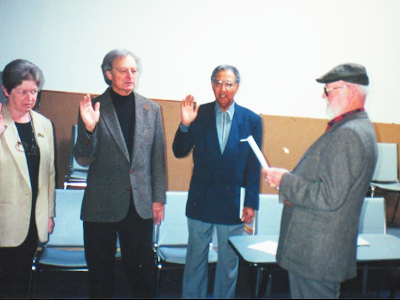

San Francisco California -- Jon Hammond at John Lee Hooker's Boom Boom Room with the boys - Tony the Door Man and Oscar Myers just after John Lee passed http://en.wikipedia.org/wiki/John_Lee_Hooker
John Lee Hooker (August 22, 1917 – June 21, 2001) was a highly influential American blues singer-songwriter and guitarist.
Hooker began his life as the son of a sharecropper, William Hooker, and rose to prominence performing his own unique style of what was originally a unique brand of country blues. He developed a 'talking blues' style that was his trademark. Though similar to the early Delta blues, his music was metrically free. John Lee Hooker could be said to embody his own unique genre of the blues, often incorporating the boogie-woogie piano style and a driving rhythm into his blues guitar playing and singing. His best known songs include "Boogie Chillen'" (1948), "I'm in the Mood" (1951) and "Boom Boom" (1962), the first two reaching R&B #1 in the Billboard charts.
There is some debate as to the year of Hooker's birth[3][4] in Coahoma County, Mississippi, the youngest of the eleven children of William Hooker (1871–1923),[6] a sharecropper and Baptist preacher, and Minnie Ramsey (born 1875, date of death unknown); according to his official website, he was born on August 22, 1917.
Hooker and his siblings were home-schooled. They were permitted to listen only to religious songs, with his earliest exposure being the spirituals sung in church. In 1921, his parents separated. The next year, his mother married William Moore, a blues singer who provided Hooker with his first introduction to the guitar (and whom John would later credit for his distinctive playing style).[8] John's stepfather was his first outstanding blues influence. William Moore was a local blues guitarist who learned in Shreveport, Louisiana to play a droning, one-chord blues that was strikingly different from the Delta blues of the time.[5] Around 1923 his natural father died. At the age of 15, John Lee Hooker ran away from home, reportedly never seeing his mother or stepfather again.[9]
Throughout the 1930s, Hooker lived in Memphis, Tennessee where he worked on Beale Street at The New Daisy Theatre and occasionally performed at house parties.[5] He worked in factories in various cities during World War II, drifting until he found himself in Detroit in 1948 working at Ford Motor Company. He felt right at home near the blues venues and saloons on Hastings Street, the heart of black entertainment on Detroit's east side. In a city noted for its pianists, guitar players were scarce. Performing in Detroit clubs, his popularity grew quickly and, seeking a louder instrument than his crude acoustic guitar, he bought his first electric guitar.
Hooker playing Massey Hall, Toronto Photo: Jean-Luc Ourlin
Hooker's recording career began in 1948 when his agent placed a demo, made by Hooker, with the Bihari brothers, owners of the Modern Records label. The company initially released an up-tempo number, "Boogie Chillen'", which became Hooker's first hit single.[5] Though they were not songwriters, the Biharis often purchased or claimed co-authorship of songs that appeared on their labels, thus securing songwriting royalties for themselves, in addition to their own streams of income.
Sometimes these songs were older tunes which Hooker renamed, as with B.B. King's "Rock Me Baby", anonymous jams "B.B.'s Boogie" or songs by employees (bandleader Vince Weaver). The Biharis used a number of pseudonyms for songwriting credits: Jules was credited as Jules Taub; Joe as Joe Josea; and Sam as Sam Ling. One song by John Lee Hooker, "Down Child" is solely credited to "Taub", with Hooker receiving no credit for the song whatsoever. Another, "Turn Over a New Leaf" is credited to Hooker and "Ling".
In 1949, Hooker was recorded whilst performing in an informal setting for Detroit jazz enthusiasts, his repertoire included down-home and spiritual tunes which he would not record commercially.[11] The recorded set has been made available in the album "Jack O'Diamonds".
Despite being illiterate, Hooker was a prolific lyricist. In addition to adapting the occasionally traditional blues lyric (such as "if I was chief of police, I would run her right out of town"), he freely invented many of his songs from scratch. Recording studios in the 1950s rarely paid black musicians more than a pittance, so Hooker would spend the night wandering from studio to studio, coming up with new songs or variations on his songs for each studio. Because of his recording contract, he would record these songs under obvious pseudonyms such as John Lee Booker, notably for Chess Records and Chance Records in 1951/52,[13] as Johnny Lee for De Luxe Records in 1953/54 as John Lee, and even John Lee Cooker,[14] or as Texas Slim, Delta John, Birmingham Sam and his Magic Guitar, Johnny Williams, or The Boogie Man.[15]
His early solo songs were recorded under Bernie Besman. John Lee Hooker rarely played on a standard beat, changing tempo to fit the needs of the song. This often made it difficult to use backing musicians who were not accustomed to Hooker's musical vagaries. As a result, Besman would record Hooker, in addition to playing guitar and singing, stomping along with the music on a wooden pallet.[16] For much of this time period he recorded and toured with Eddie Kirkland, who was still performing as of 2008. Later sessions for the VeeJay label in Chicago used studio musicians on most of his recordings, including Eddie Taylor, who could handle his musical idiosyncrasies very well. His biggest UK hit, "Boom Boom", (originally released on VeeJay) was recorded with a horn section.
Later life
Toronto, August 20, 1978
He appeared and sang in the 1980 movie The Blues Brothers. Due to Hooker's improvisational style, his performance was filmed and sound-recorded live at the scene at Chicago's Maxwell Street Market, in contrast to the usual "playback" technique used in most film musicals.[17] Hooker was also a direct influence in the look of John Belushi's character Jake Blues.
In 1989, he joined with a number of musicians, including Carlos Santana and Bonnie Raitt to record The Healer, for which he and Santana won a Grammy Award. Hooker recorded several songs with Van Morrison, including "Never Get Out of These Blues Alive", "The Healing Game" and "I Cover the Waterfront". He also appeared on stage with Van Morrison several times, some of which was released on the live album A Night in San Francisco. The same year he appeared as the title character on Pete Townshend's The Iron Man: A Musical.
Hooker recorded over 100 albums. He lived the last years of his life in Long Beach, California.[18] In 1997, he opened a nightclub in San Francisco's Fillmore District called "John Lee Hooker's Boom Boom Room", after one of his hits.[19]
He fell ill just before a tour of Europe in 2001 and died on June 21 at the age of 83, two months before his 84th birthday. His last live in the studio recording on guitar and vocal was of a song he wrote with Pete Sears called "Elizebeth", featuring members of his "Coast to Coast Blues Band" with Sears on piano. It was recorded on January 14, 1998 at Bayview Studios in Richmond, California. The last song Hooker recorded before his death was "Ali D'Oro", a collaboration with the Italian soul singer Zucchero, in which Hooker sang the chorus "I lay down with an angel". He was survived by eight children, nineteen grandchildren, eighteen great-grandchildren, a nephew, and fiance Sidora Dazi. One of his children is the musician John Lee Hooker, Jr.
Among his many awards, Hooker has a star on the Hollywood Walk of Fame and in 1991 he was inducted into the Rock and Roll Hall of Fame. Two of his songs, "Boogie Chillen" and "Boom Boom" were included in the list of The Rock and Roll Hall of Fame's 500 Songs that Shaped Rock and Roll. "Boogie Chillen" was included as one of the Songs of the Century. He was also inducted in 1980 into the Blues Hall of Fame. In 2000, Hooker was awarded the Grammy Lifetime Achievement Award.
[edit]Music
Hooker's guitar playing is closely aligned with piano boogie-woogie. He would play the walking bass pattern with his thumb, stopping to emphasize the end of a line with a series of trills, done by rapid hammer-ons and pull-offs. The songs that most epitomize his early sound are "Boogie Chillen", about being 17 and wanting to go out to dance at the Boogie clubs, "Baby, Please Don't Go", a blues standard first recorded by Big Joe Williams, and "Tupelo Blues",[20] a stunningly sad song about the flooding of Tupelo, Mississippi in April 1936.
He maintained a solo career, popular with blues and folk music fans of the early 1960s and crossed over to white audiences, giving an early opportunity to the young Bob Dylan. As he got older, he added more and more people to his band, changing his live show from simply Hooker with his guitar to a large band, with Hooker singing.
His vocal phrasing was less closely tied to specific bars than most blues singers. This casual, rambling style had been gradually diminishing with the onset of electric blues bands from Chicago but, even when not playing solo, Hooker retained it in his sound.
Though Hooker lived in Detroit during most of his career, he is not associated with the Chicago-style blues prevalent in large northern cities, as much as he is with the southern rural blues styles, known as delta blues, country blues, folk blues, or "front porch blues". His use of an electric guitar tied together the Delta blues with the emerging post-war electric blues.[21]
His songs have been covered by Buddy Guy, Cream, AC/DC, ZZ Top, Led Zeppelin, Tom Jones, Jimi Hendrix, Eric Clapton, Nick Cave & The Bad Seeds, Van Morrison, The Yardbirds, The Animals, The Doors, The White Stripes, MC5, George Thorogood, R. L. Burnside, The J. Geils Band, Big Head Todd and the Monsters, The Gories, Cat Power, and The Jon Spencer Blues Explosion. — with John Lee Hooker

Hamburg Germany -- the great tenor saxophonist Dewey Redman - Jon Hammond *whenever I would see Dewey he would tell me he was dying. Unfortunately/sadly this time he was right, soon after he was dead http://en.wikipedia.org/wiki/Dewey_Redman
Dewey Redman (born Walter Dewey Redman in Fort Worth, Texas, May 17, 1931; d. Brooklyn, New York September 2, 2006
Redman attended I.M. Terrell High School, and played in the school band with Ornette Coleman, Prince Lasha and Charles Moffett. After high school, Redman briefly enrolled in the electrical engineering program at the Tuskegee Institute in Alabama, but became disillusioned with the program and returned home to Texas. In 1953, Redman earned a Bachelors Degree in Industrial Arts from Prairie View Agricultural and Mechanical University. While at Prairie View, he switched from clarinet to alto saxophone, then, eventually, to tenor. Following his bachelor's degree, Redman served two-years in the US Army.
Upon his discharge from the Army, Redman began working on a master’s degree in education at the University of North Texas. While working on his degree, he taught music to fifth graders in Bastrop, Texas, and worked as a freelance saxophonist on nights and weekends around Austin, Texas. In 1957, Redman earned a Masters Degree in Education with a minor in Industrial Arts from the University of North Texas.[4] While at North Texas, he did not enroll in any music classes.
Towards the end of 1959, Redman moved to San Francisco, a musical choice resulting in an early collaboration with Donald Rafael Garrett.
Dewey Redman at Moers Festival, June 2006, Germany
Redman was best known for his collaborations with saxophonist Ornette Coleman, with whom he performed in his Fort Worth high school marching band. He later performed with Coleman from 1968 to 1972, appearing on the recording New York Is Now, among others. He also played in pianist Keith Jarrett's American Quartet (1971–1976), and was a member of the collective Old And New Dreams. The American Quartet's The Survivor's Suite was voted Jazz Album of the Year by Melody Maker in 1978.[8]
He also performed and recorded as an accompanying musician with jazz musicians who performed in varying styles within the post-1950s jazz idiom, including bassist and fellow Coleman-alum Charlie Haden and guitarist Pat Metheny.
With a dozen recordings under his own name Redman established himself as one of the more prolific tenor players of his generation. Though generally associated with free jazz (with an unusual, distinctive technique of sometimes humming into his saxophone as he played), Redman's melodic tenor playing was often reminiscent of the blues and post-bop mainstream. Redman's live shows were as likely to feature standards and ballads as the more atonal improvisations for which he was known.
Redman was the subject of an award-winning documentary film Dewey Time (dir. Daniel Berman, 2001).
On February 19 and 21, 2004, Redman played tenor saxophone as a special guest with Jazz at Lincoln Center, in a concert entitled "The Music of Ornette Coleman."audio link
Redman died of liver failure in Brooklyn, New York, on September 2, 2006. He is survived by his wife, Lidija Pedevska-Redman, as well as sons Tarik and Joshua, who is also a jazz saxophonist. The father and son recorded two albums together. — with Dewey Redman at Fabrik Hamburg

Tenor Saxophonist Tom Scott and Jon Hammond..both with hair!
Jon Hammond
Works at Musikmesse
Timo Bergström
Gymnasiet svenska normallyceum
Jon Paris
New York, New York
Jimmy Lyon
Works at Having As Much Fun As Possible, Inc.
Ulrich Vormehr
Narada Michael Walden
President at Tarpan Studios
Hal Oppenheim
Kenji Nakai
Los Angeles, California
Corey Prentice
Cabo San Lucas, Baja California Sur
Dan Saraceno
Alan Skwarla
Duquesne University School of Law
Glenn Caz Cazenave
Owner-Operator at PC HuB
Adele Guerrero
UCLA
Donald Parks
The Ohio State University
Alan Hickman
Carl Green
Sonoma State University
David Schwartz
Helena Johnson
Andy Daddario
Works at Warner Bros. Entertainment
Kiera Les
Model, Runway & Print at Ford Models
Brian Wildman
North Olmsted, Ohio
Sommer Helmut
Bassman at Alive&kicking simple minds tribute band
Александр Шустер
Netanya, Israel
Robert Panerio
University Place, Washington
Pamela Lefko
Works at TUSD
Craig Adams tom scott.. didnt he play with the blues brothers.. i know that name
Jon Hammond Hi Craig, also Joni Mitchell, John Lennon, tons of TV and movie work http://en.wikipedia.org/wiki/Tom_Scott_(musician) - Jon
Tom Scott (musician) - Wikipedia, the free encyclopedia
en.wikipedia.org
Tom Scott (born May 19, 1948) is an American saxophonist, composer, arranger, conductor and bandleader of the west coast jazz/jazz fusion ensemble The L.A. Express.

Anaheim CA - Winter NAMM Show -- Jon Hammond at the old Anaheim Convention Hall building, the whole NAMM used to fit in there. No Baby Strollers and No Personal Instruments...unless you're me! Jon with XK-1 Hammond organ for Midnight Showcase with Bernard Purdie - Youtube http://www.youtube.com/watch?v=afTagFhYOCo
Hilton Hotel Anaheim
Pocket Funk by Jon Hammond © JH INTL ASCAP
Bernard Purdie drums
Joe Berger guitar
Jon Hammond organ
Shea Marshall sax
Winston Byrd trumpet
For Flash Back 1989 Mikell's Pocket Funk Video:
http://video.google.com/videoplay?docid=-2831189635144040422&hl=en#
Pocket Funk LIVE JON HAMMOND Band w/BERNARD PURDIE at Mikell's NYC — at Anaheim Convention Center

Oslo Norway - City Hall -- Dig this beautiful room inside Oslo City Hall folks! - Jon Hammond interview with Lord Mayor Per Ditlev-Simenson http://www.youtube.com/watch?v=3SEJhqXVqiU
A special visit with Lord Mayor of Oslo PER DITLEV-SIMONSEN in Oslo Norway on Jon Hammond's HammondCast Show for CBS' KYCY/KYOU 1550 AM — at Oslo City Hall

Oslo Norway - City Hall -- In this shot you see the famous art of Edvard Munch - I believe it is the painting that was stolen and eventually recovered - now hung in a very secure manner folks! Inside Oslo City Hall - photo by Jon Hammond and interview with Lord Mayor Per Ditlev-Simenson http://www.youtube.com/watch?v=3SEJhqXVqiU
A special visit with Lord Mayor of Oslo PER DITLEV-SIMONSEN in Oslo Norway on Jon Hammond's HammondCast Show for CBS' KYCY/KYOU 1550 AM — with Edvard Munch at Oslo City Hall

1966 Junior Jazz Champion Jon Hammond at age 13 - Giulietti Classic 127 Accordion was personally delivered to Jon by the greatest John Molinari - R.I.P. John Molinari http://www.accordia-records.com/molinari_biography.htm
John Molinari was one of the greatest masters of the accordion. His natural talent, love of the instrument and years of dedicated study led to an extremely successful musical career. He was an artist who possessed a brilliant and masterful technique with a remarkable solo repertoire that ranged from popular to folk to classical.
John Molinari was born in San Francisco (1912), the only son of Italian immigrants. At the age of four his parents gave him a little two bass semitone accordion. By the time Molinari was twelve he was already performing at dances and weddings. As a teenager he appeared as a featured act in Vaudeville theaters throughout California. Later he studied piano and theory with Adolph Fink, the well-known student of Antonín Dvořák.
During World War II John toured the South Pacific with USO Camp Shows entertaining the Allied Troops. After the war his engagements extended to the concert halls and supper clubs throughout the United States and Canada. John appeared with famous opera soprano, Jamilla Novotna, the Andrew Sisters, Vaudeville stars Veloz and Yolanda, and on national radio with Fred Waring.
In 1952, on the strength of his recordings, John toured Hawaii and Iceland. It was also in 1952 that he turned down a major contract with MCA because it would have meant extensive time away from his young family. Instead, he worked for MCA in Northern California and limited his touring to featured supper club appearances, including the Waldorf Astoria in New York and the Fairmont Hotel in San Francisco.
In 1967, 1969 and again in 1972, through the efforts of his friend and colleage, Veikko Ahvenainen, John toured Europe, Scandinavia, the Baltic States and the Soviet Union. John remained, for the most part, in the San Francisco area where he performed and taught until his death in 1989.
Friends and admirers will long remember John Molinari for his marvelous technique and interpretation that have placed him among the leading artists of the accordion. John’s recordings date back to 1949. He played his own arrangements exclusively. We hope you will enjoy listening to his unique style. — in Sacramento, CA

New York NY 596 10th Ave Mr. Biggs -- Jon Hammond Band gig just after I returned from living in Paris France for one year with Ray Grappone drums, Todd Anderson tenor sax and Barry Finnerty guitar - this was the gig that Barry went home on the first break and never came back. He said he 'couldn't find his keys' - Jon Hammond at the organ http://www.jonhammondband.com/ — with Todd Anderson at Mr Biggs Bar and Grill

New York NY 30 Rockefeller Plaza NBC TV Studios -- Jon Hammond with Jon's friend long-time NBC Stage Manager Jeff Samaha at Tom Brokaw's http://en.wikipedia.org/wiki/Tom_Brokaw NBC Evening News Anchor Desk. Jeff was Stage Manager for David Letterman Show along with Biff Henderson before David moved over to CBS - JH — at 30 Rockefeller Plaza

Zurich Switzerland -- Tenor Saxophonist Christian Muenchinger on Jon Hammond Band gig in Moods Jazz Club
http://www.moods.ch/
Schiffbaustrasse 6|8005 Zürich Switzerland
http://www.jonhammondband.com/

Slightly used US Mailboxes! Jon Hammond


Jon Hammond in Hamamatsu Japan with Mr. Tanaka Director of Tourism
アメリカからのミュージシャンが浜松市観光インフォメーションセンターに寄って下さいました。
その方は、Digital B3 Organ Specialisit のMr. Jon Hammond さんです。
浜松では鈴木楽器製作所さんや浜松市楽器博物館を訪問されたそうです。
浜松がとても気に入って、滞在を楽しんでいらっしゃいました。
http://hamamatsutic.hamazo.tv/e2334330.html
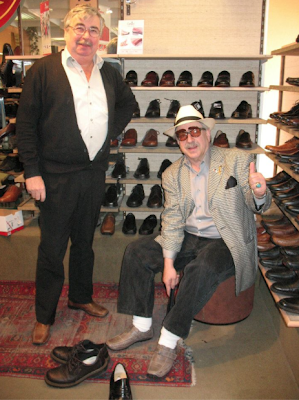
Jon Hammond gets a new pair of super comfortable summer Rieker shoes from main man Rudolf Molzberger at Schuh-Krolla in Frankfurt, rockin'! — at Münchener Str. 16 60329 Frankfurt
*WATCH THE VIDEO HERE: Frank Marocco Plays There Is No Greater Love video by Jon Hammond
http://archive.org/details/JonHammondFrankMaroccoPlaysThereIsNoGreaterLove/
Youtube http://www.youtube.com/watch?v=gNbUiqbIWm4
Astounding performance by master accordionist Frank Marocco "There Is No Greater Love" uptempo closer in Trio with drummer Harold Jones and bassist Kash Killion - Peter DiBono announcing at San Francisco Accordion Club approximately 10 years ago - video by Jon Hammond In Memory of Frank Marocco with permission of Frank's daughter Cindy Marocco Thoburn and Frank's manager Elke Ahrenholz. http://en.wikipedia.org/wiki/Frank_Marocco January 2, 1931 -- March 3, 2012 Official Frank Marocco website http://www.frankmarocco.com courtesy of HammondCast http://www.HammondCast.com
Category:
Music
Tags:
Frank Marocco, Master Accordionist, Jazz, TV, Radio, Movies, Music, Documentary
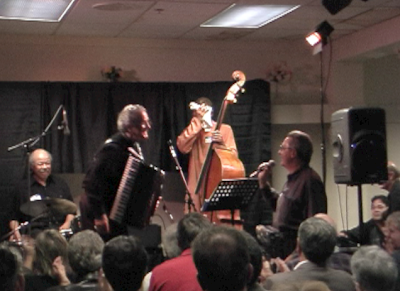
Vimeo http://vimeo.com/46548372
Frank Marocco Plays There Is No Greater Love from Jon Hammond on Vimeo.
Blip TV http://blip.tv/jon-hammond/frank-marocco-plays-there-is-no-greater-love-6278659http://www.facebook.com/photo.php?v=10150989668822102
*WATCH THE VIDEO HERE: Get Back In The Groove Louisville Soundcheck
http://archive.org/details/JonHammondGetBackInTheGrooveLouisvilleSoundcheck/
Blip TV http://blip.tv/jon-hammond/get-back-in-the-groove-louisville-soundcheck-6278298
Youtube http://www.youtube.com/watch?v=PgAdVaR_-K8
Get Back In The Groove by Jon Hammond - at soundcheck in Louisville Kentucky
with John Bishop guitar
Alex Budman tenor saxophone
Ronnie Smith Jr. drums
Jon Hammond organ / bass
from Jon's album "Hammond's Bolero" also on "Late Rent" with Jon Hammond playing guitar
http://www.jonhammondband.com
Category:
Music
Tags:
Louisville Kentucky, Soundcheck Get, Back In The Groove, Jon Hammond Band
Vimeo http://vimeo.com/46522256
Get Back In The Groove Louisville Soundcheck from Jon Hammond on Vimeo.
Louisville Kentucky, Hamamatsu Japan, Suzuki, Hammond organ, Jazz, Salsa, Czechoslovakian, Local 6, Musicians Union, Earl Watkins, Walk To Stay Alive














































